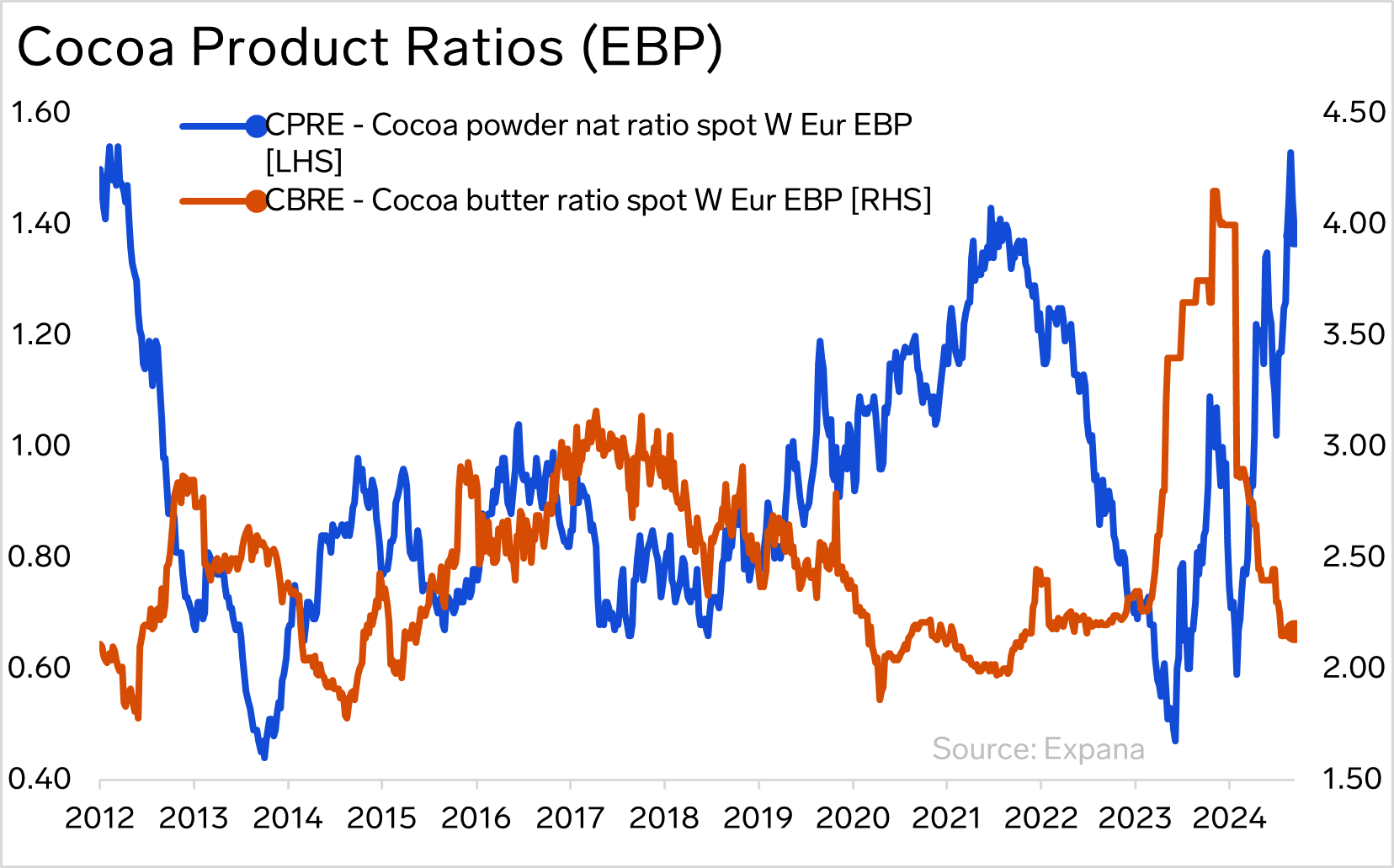Over the past two weeks, cocoa futures have made steady gains. Both London and New York cocoa bean futures bottomed out around July 17, reacting sharply to the release of weak European and Asian Q2 grind data, which underscored sluggish chocolate demand. Earnings reports from major manufacturers have confirmed this weaker demand. In London, the second month DEC25 contract has risen from a low of £4,782/mt on July 17 to £5,477/mt as of July 31, an increase of 14.5%. Funds have reduced their net long exposure in both London and NY through mid-July, with a combined net long decline of 7,000 lots from end-June, settling at 23,000 lots. However, sentiment has diverged slightly: New York futures saw a recent uptick in fund buying, while London continued to see selling pressure. The London market has also been supported by a weaker GBPUSD rate, particularly since the signing of the US-EU trade agreement (customer access only) earlier this week, falling from 1.34 last Friday to 1.32 as of the time of publication.

The cocoa market continues to be underpinned by supply-side concerns in West Africa, especially due to an intensifying mini dry season during July. Preliminary findings from ongoing crop surveys suggest pod setting remains well below average, while pod survival rates are only average at best. Unless upcoming site data reveals improvements, market sources tell Expana a reduction in 2025/26 production forecasts for Côte d’Ivoire and Ghana appears likely.
Spot cocoa butter ratios dropped to 2.20, while powder ratios climbed to 1.53 in mid-July, their highest level since 2013, pointing to weak chocolate confectionery demand and a tilt in processor economics as processors continue to seek higher returns due to strong compound demand. Despite these supply pressures, warehouse stocks are rising: US inventories reached an 11-month high at 141,500 tonnes (up 2,000 tonnes in July), and European stocks climbed to a 13-month high at 70,400 tonnes, suggesting short-term oversupply. In terms of trade policy, potential changes to US import tariffs on cocoa products, hinted at during negotiations with Indonesia, are generating speculation among market participants about implications for West African origins. Meanwhile, the recent EU-US trade agreement, which places a 15% tariff on EU cocoa imports, has had a mild bullish effect on futures as concerns over demand erosion in the US are partially offset by stable European access.
Image source: Adobe
Written by Andrew Moriarty




